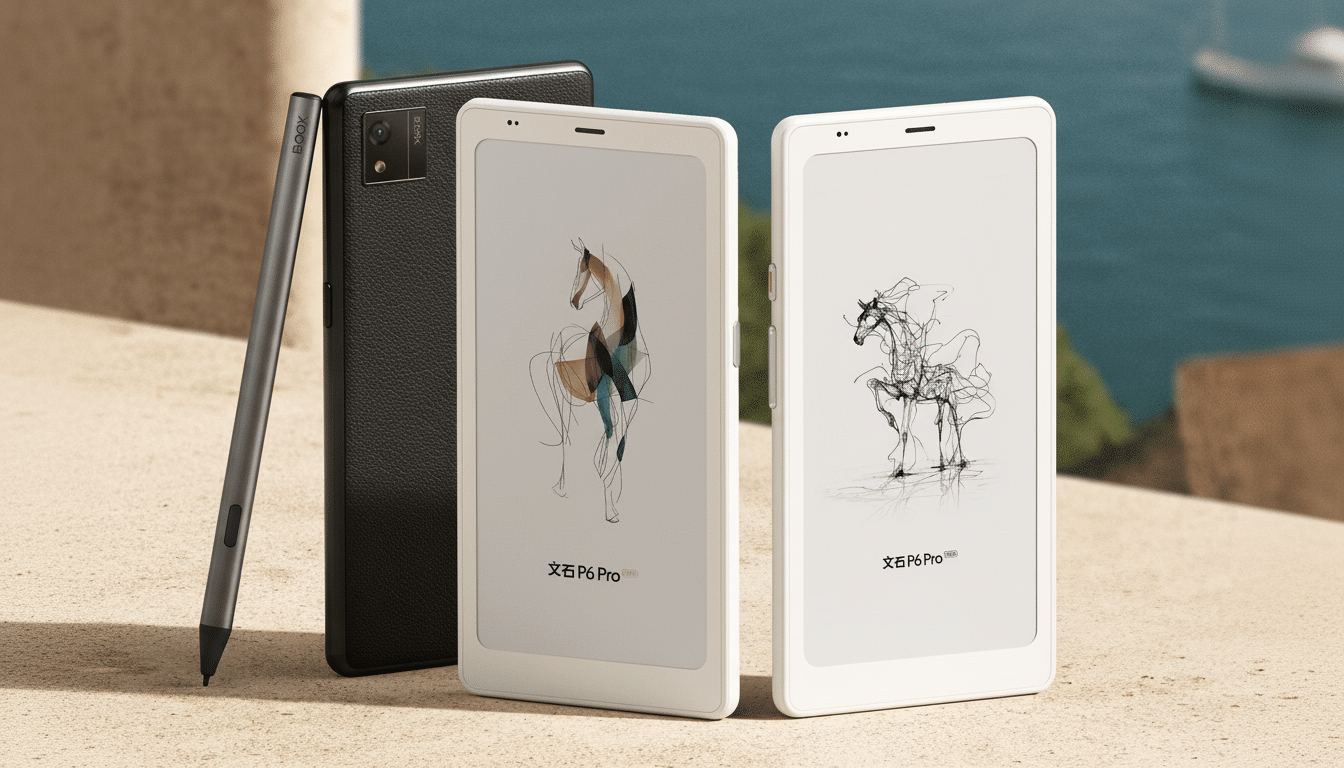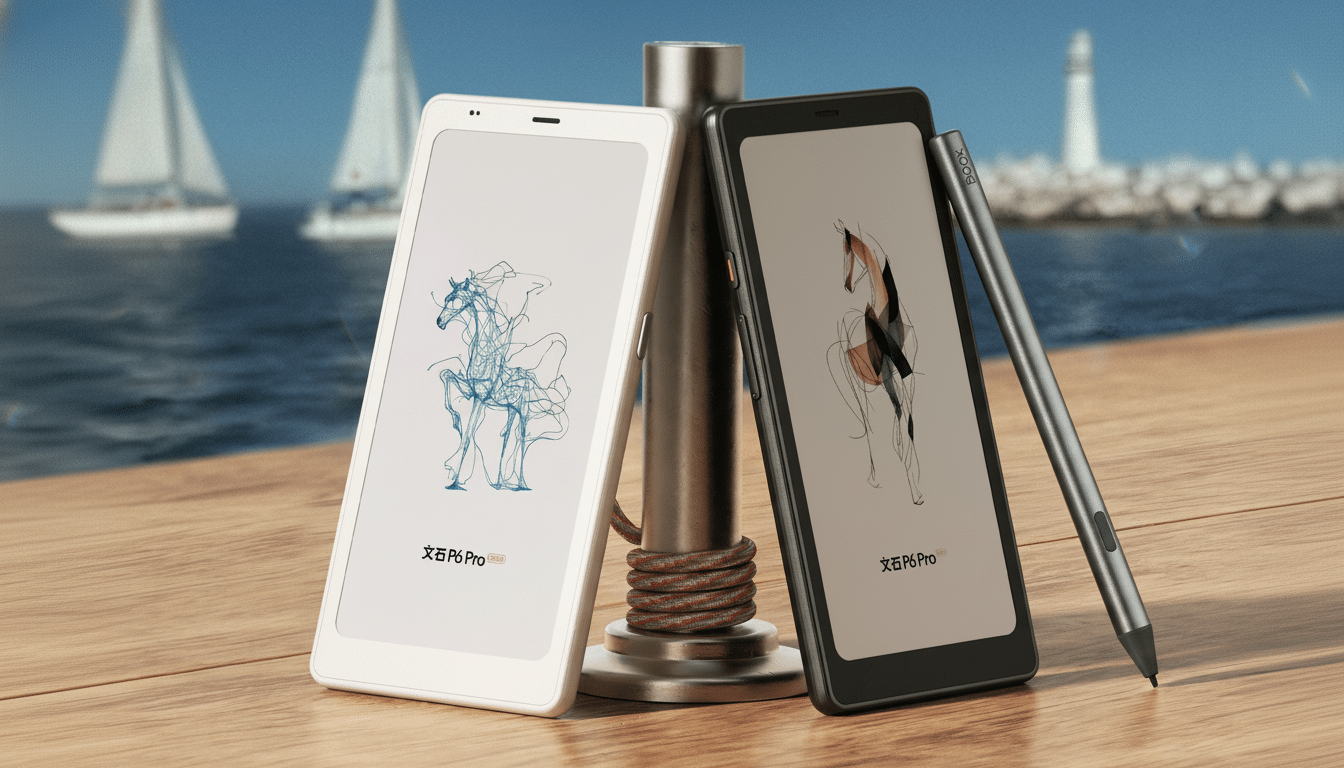The Boox P6 Pro is your Kindle if it wanted notifications and a signal bar. It’s a palm-size e-reader with a SIM slot, 4G/5G data, full support for Android apps and just enough phone-adjacent behavior to take a fresh look at what “reading on the go” can mean.
A Pocket E-Reader That Acts Like A Phone
Onyx envisions the P6 Pro as smartphone-size E Ink that can live online without Wi-Fi. The headline is cellular data riding on a tiny reader — an oddity in a product category that has typically eschewed radios in order to save on battery life. The company has also confirmed VoIP support for services such as WeChat and other internet-calling apps, though it’s kept mum on whether traditional voice calls or SMS are part of the plan.

That distinction matters. Instead of your phone, the P6 Pro is how reading-soaked tasks spill over to that moment when you’re out of Wi-Fi: syncing your library, snatching up some podcasts or reads on a whim, responding to messages in low-distraction text, hopping in and out of a short audio call. It’s the idea of the “quiet phone,” made for people who like to text and read long-form articles more than they like to watch video or doomscroll.
Hardware Designed for Reading First, Not for Calls
The P6 Pro couples 8GB of RAM with 128GB storage, which can be expanded up to 2TB through a hybrid SIM/microSD slot.
By e-reader standards, that’s generous and brings it more in line with a compact Android phone than a basic E Ink slate. Think of its 16MP rear camera as more for scanning — say, of receipts, book excerpts, whiteboards — than picture-taking.
Two display offerings may be in the offing, a traditional black-and-white E Ink model for highest contrast and battery life, while a color E Ink option is planned for comics, graphs and color-coded notes.
Recent devices from Onyx feature a couple of refresh profiles that allow you to accept some compromise in clarity for smoother scrolling when necessary. It’s also the first compact reader in this line from the company to include stylus support, giving it a slight nudge toward margin notes and quick markups.
Running Android with Google Play access, the P6 Pro can also bring in Kindle, Kobo and Libby alongside note-taking apps like Evernote and voice tools like Zoom or WhatsApp. That’s the draw, that interoperability: your reading workflow, your apps and your cloud all on an eye-friendly display.
Why a Connected E Ink Reader Makes Sense Now
There’s an increasing appetite for slower, healthier screen time. E Ink panels are reflective displays and give off little to no blue light, making them more comfortable for long reading sessions than OLED or LCD. E Ink Corporation has long extolled the technology’s low-power nature — the display of a static page requires effectively no power — and that also translates to the kind of multi-day battery life you can get even with irregular syncing.

The P6 Pro also has market momentum. GSMA Intelligence further notes that 5G coverage is more widespread and data pricing is far more flexible in other parts of the world, hence always-connected secondary devices are becoming increasingly feasible. And Pew Research Center has reported that about a third of U.S. adults read e-books — a large base used to juggling multiple libraries, note systems and reading apps. It makes sense for there to be a cellular reader that brings together those bits without the temptations of a proper smartphone.
We’ve seen neighboring experiments of this before: the E Ink phones from Hisense, the dual-screen YotaPhone bonanza, and Onyx’s own Palma. The P6 Pro’s angle is a lack of it — phone-like connectivity and apps, but a display that subtly discourages habits for scrolling through feeds. It’s a platform built for people who want to read, annotate and communicate — not watch video by the mile.
The Trade-Offs and Open Questions Facing P6 Pro
Even with E Ink, the refresh rate is a little slow and there is some ghosting on occasion compared to glassy phones. Messaging, email and calls are all present and correct; fast-scrolling social feeds will feel deliberately hampered. It’s a lot of the point, probably, but buyers should temper expectations.
There are also pragmatic unknowns: whether traditional voice calling and SMS are included, the bands for popular 4G/5G in different regions of the world and their final cost. Color E Ink is almost always at a higher price than monochrome. If Onyx follows previous launches, international availability could come after the China announcement — albeit under slightly differing product names and prices.
Battery size and charging specs are still to be detailed; however, Onyx’s little readers typically squeeze enough headroom in them for weeks’ worth of light reading or maybe several days of app-heavy use. As always, the key to stylus experience will be latency, palm rejection and software polish in Onyx’s note apps.
Early Verdict on the Boox P6 Pro’s Connected Reader
The Boox P6 Pro, on the other hand, seems like the most impactful update to Onyx’s phone-sized reader playbook. With the inclusion of cellular data and an emphasis on reading, notes and low-friction communication (all provided via Instapaper), it gives other apps, large enough to ignore Apple’s offerings, a credible read: “less phone, more book” for commuters, students and knowledge workers.
If the price is right and friendly bands around the world play along, this could be a first e-reader to tuck in many pockets not just on literature-savoring Sundays, but for calendars, clipped articles and call-in meetings — minus the visual noise of a traditional phone. That’s a pretty small niche, but it is growing.

